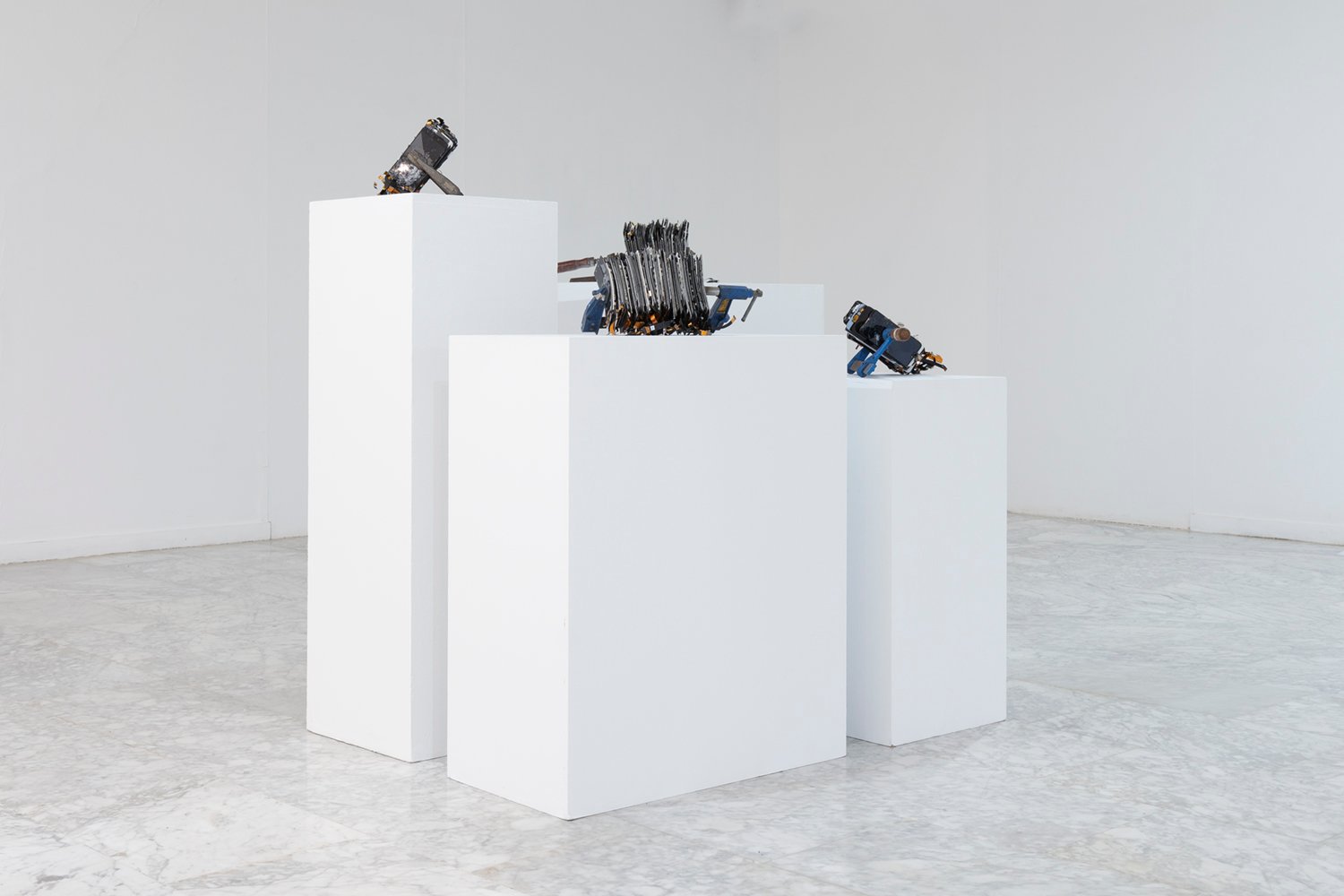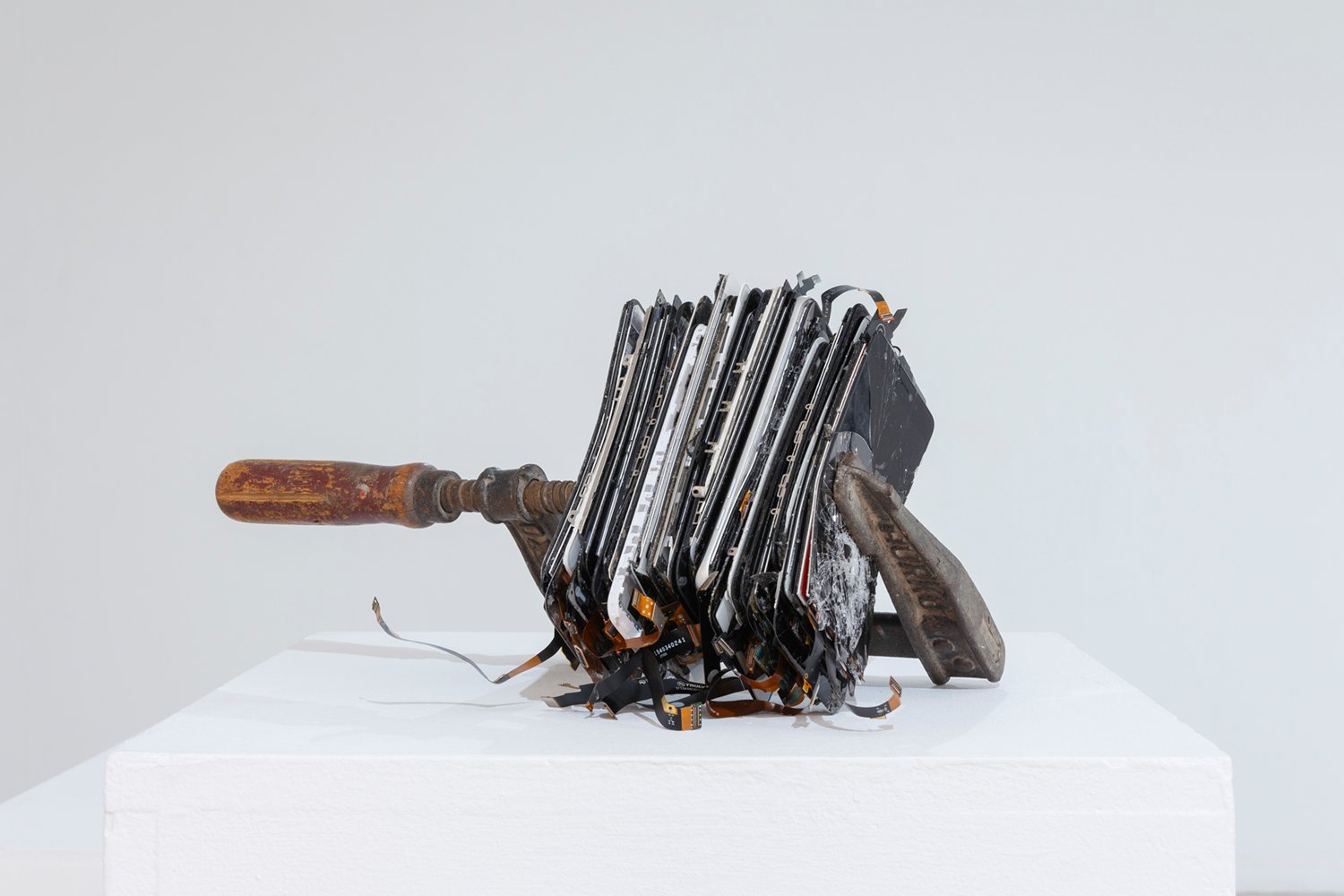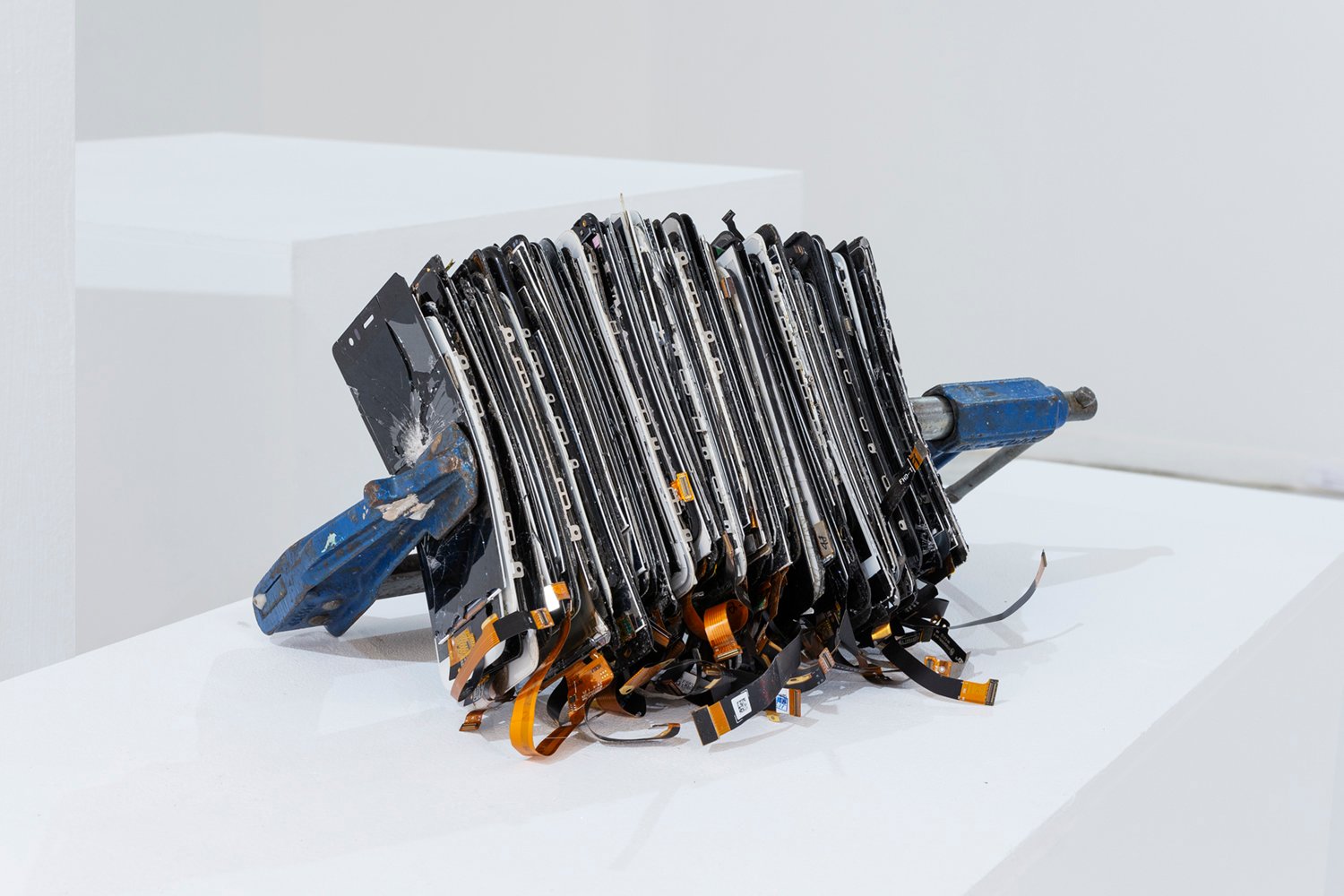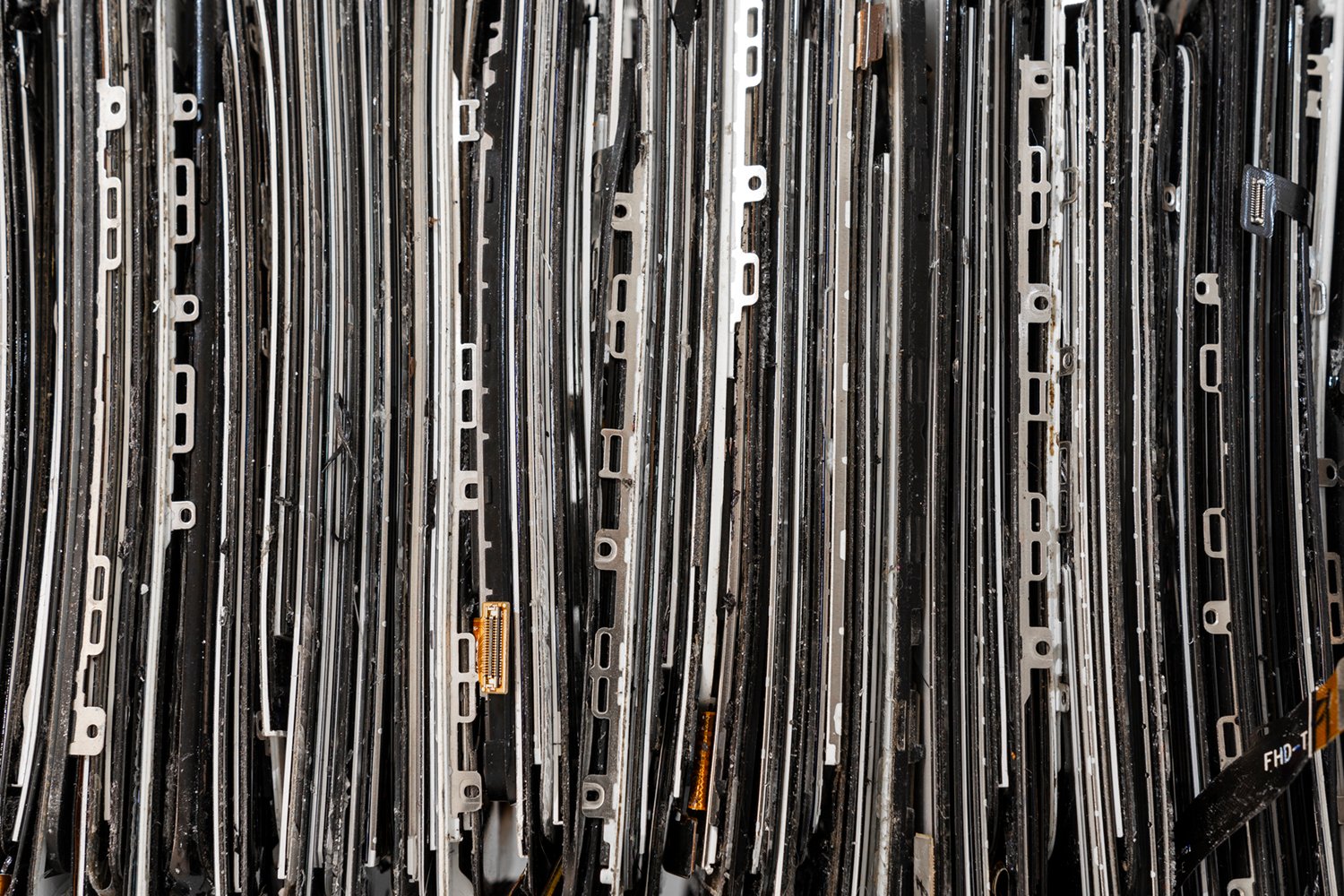 Installation shot of the project Still Life. Mobile phone screens and c-clamps, 2019.
Installation shot of the project Still Life. Mobile phone screens and c-clamps, 2019.
 Installation shot of the project Still Life. Mobile phone screens and c-clamps, 2019.
Installation shot of the project Still Life. Mobile phone screens and c-clamps, 2019.
 Installation shot of the project Still Life. Mobile phone screens and c-clamps, 2019.
Installation shot of the project Still Life. Mobile phone screens and c-clamps, 2019.
 Installation shot of the project Still Life. Mobile phone screens and c-clamps, 2019.
Installation shot of the project Still Life. Mobile phone screens and c-clamps, 2019.
 Detail of the project Still Life. Mobile phone screens and c-clamps, 2019.
Detail of the project Still Life. Mobile phone screens and c-clamps, 2019.
In 2005, Rosalind Krauss wrote A Voyage on the North Sea: Art in the Age of the Post-Medium Condition, where the approach of hybridization -implemented particularly in the language of installation- implied a dissolution of art in capitalist logic. In recent years, the appearance and diffusion of new (re)production tools, used both by the commercial and by the artistic sphere, update this observation leading to reconsidering it from the perspective of reproducibility, questioning the unique artwork.
Still Life is defined through a set of recovered broken screens of mobile phones -which deny their status as a figurative image due to their rupture which generates an abstraction- as a reflection of the modes of production and consumption of contemporary society, where, with its accumulation and linear disposition through the pressure of the sergeants -which avoids the work falls to the ground and collapse their meaning- represents a recontextualization of a consumer article when it has already fulfilled its mission and it is obsolete, useless and far from a production system, establishing a new meaning based on a narrative based on the imposing physicality of a set of broken mobile screens in front of a dematerialized society and the oppression of the digital environment and capitalism on the human being, in addition to the almost absolute and vital dependence on the daily experience of our own community.
